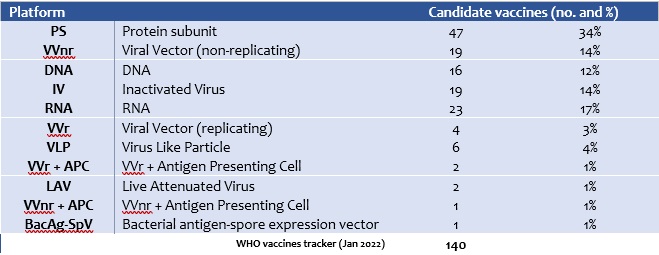Blog
04 May 2022
Vaccines – what’s next?
Who’s getting their shots?
Over ten billion Covid vaccines have been administered so far – more than people on the planet. But we know some countries have done more than others.
In Europe, uptake of vaccines has been 40-80%. Some people refuse the vaccine for a number of reasons: fear of side effects, compromised immune systems, lack of access, religious beliefs, and as we all know, straightforward misinformation. Some are simply disorganised or busy, and remember also that a full 10% of the population has a fear of needles. Whatever the reasons, the upshot is that we’ll never see 100% vaccination globally.
Which vaccines work best?
The Omicron variant, now dominant, is the most mutated to date. Studies show that two doses of currently available vaccines only give ~50% initial protection from hospitalisation. And 20 weeks after the second dose, all protection is lost. But here’s the thing: a booster, provided it’s an mRNA vaccine, takes it back to 90%. (UKHSA study 2022).

Five vaccines have now been approved in the EU:
- mRNA: Comirnaty (BioNTech and Pfizer) and Spikevax (Moderna),
- Viral vector: Vaxzervria (AstraZeneca) and COVID-19 Vaccine Janssen
- Protein sub-unit: Nuvaxovid (Novavax)
In the case of the Pfizer and Moderna mRNA vaccines, genetic material from the SARS-CoV-2 (COVID-19 virus), also known as messenger RNA is encapsulated for delivery to human immune cells. They teach our cells to manufacture a harmless spike protein which triggers specific antibody production against Covid-19. The mRNA itself then degrades.
In contrast, viral vector vaccines uses a deactivated virus to deliver the SARC-CoV-2 elements to our immune cells. Astra Zeneca uses a chimpanzee adenovirus, which causes colds in chimps and Janssen uses a modified human adenovirus. Both trigger the production of spike proteins, which in turn trigger specific antibody production.
Novavax’s vaccine was also recently approved in the EU. Studies show that two doses have 91% efficacy against symptomatic Covid – that’s similar to already approved vaccines. It uses technology that is routinely used against flu, HPV and Hepatitis B: a harmless lab-made SARS-CoV-2 spike protein unit is injected and the immune system does the rest. Interestingly, a recent study suggests its protection holds up much better against Omicron.
Will the vaccines cover new variants?
It takes around six weeks to modify a vaccine for a new variant, but much longer to manufacture it. There’s also the worry of when a new variant will evolve to evade the vaccines. The answer is to broaden the vaccines portfolio, and develop a menu of vaccines that work in different ways.
What’s coming down the pipeline?
There are 341 vaccines undergoing trials right now ~140 at clinical stage, using a variety of different approaches, or platforms.

Of those in development, 31 are at their final stages of clinical trials (stage III) . The vast majority are intra-muscular injections, but four candidates in the final stages are intra-nasal sprays like some flu vaccines – which is good news for the above-mentioned needle-phobes.
Author: Dr Verity Rawson